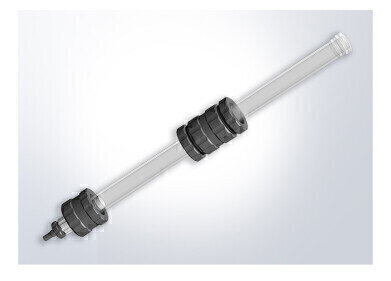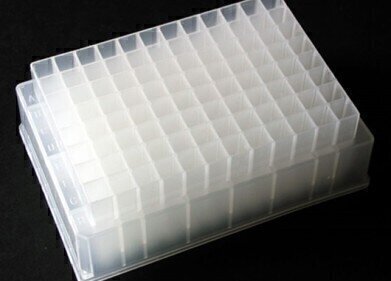Preparative
An Introduction to Supercritical Fluid Chromatography
Sep 08 2014
Dense Gases?
A supercritical fluid is the phase of a material somewhere between a gas and a liquid, a dense gas. It happens in the area on a phase diagram where the boundaries between liquid and gas become blurred. When a material is described as supercritical, it stops behaving as a normal liquid or gas. Increasing the temperature of a supercritical fluid cannot change it into a gas, whilst increasing the pressure doesn’t result in a liquid forming — changes you would expect with normal liquids and gases.
A supercritical fluid behaves like a liquid and a gas and exhibits properties of both liquids and gases.
Properties
It is the properties of density, diffusivity and viscosity that make a supercritical fluid attractive to chromatographers:
- Because the fluids have a density closer to liquids than gases, they are better at dissolving solutes than gases; therefore they can transport more material than a gas can.
- The diffusivity in a supercritical fluid is between that of gas and liquid — with supercritical fluids being easier to diffuse through than liquids. This means they can be faster carriers than liquids
- A supercritical fluid has a similar viscosity to a gas, much less than a liquid. This means that it is easier to flow through materials. Again, this can lead to faster transport through a column.
What is Supercritical Fluid Chromatography?
It had long been known that certain non-volatile organic compounds are soluble in inorganic gases above their critical point (‘super’-critical). At a 1957 symposium, Lovelock suggested the use of inorganic gases above their critical points as a chromatographic mobile phase. The technique of using so-called ‘dense gases’ developed as Supercritical Fluid Chromatography (SFC). Hewlett Packer developed the first commercial instruments in the early 1980s as the importance of the technique became recognised.
SFC uses a similar set-up to high performance liquid chromatography (HPLC) — except for the use of an oven and a restrictor to increase the pressure in the column. These are to generate the supercritical fluid. A wider range of detectors can be used in SFC than in HPLC — with the use of the flame ionisation detector from gas chromatography an important tool in SFC. SFC columns are similar to HPLC columns in terms of coatings — with fused silica a common material.
Typically, SFC utilizes carbon dioxide as the mobile phase as its critical temperature and pressure are easy to reach, and thus makes it supercritical.
Advantages of SFC
SFC has a number of advantages over normal phase HPLC being:
- 3-5 times faster to process samples than normal phase HPLC
- Cheaper to operate
- Produces less toxic and flammable waste
- Much easier to dry down fractions
The advantages of SFC over GC are:
- Non-volatile and polar solutes can be analysed easier
- Thermally labile compounds can be analysed
- High molecular weight compounds can be analysed
SFC isn’t a new separation method, but it is re-emerging again after some years in the wilderness. To learn more about this technique and its applications, read this article: How Good is SFC for Polar Analytes?
Events
May 11 2025 Vienna, Austria
May 18 2025 Tempe. AZ, USA
May 21 2025 Birmingham, UK
Jun 01 2025 Baltimore, MD, USA
Jun 15 2025 Bruges, Belgium














